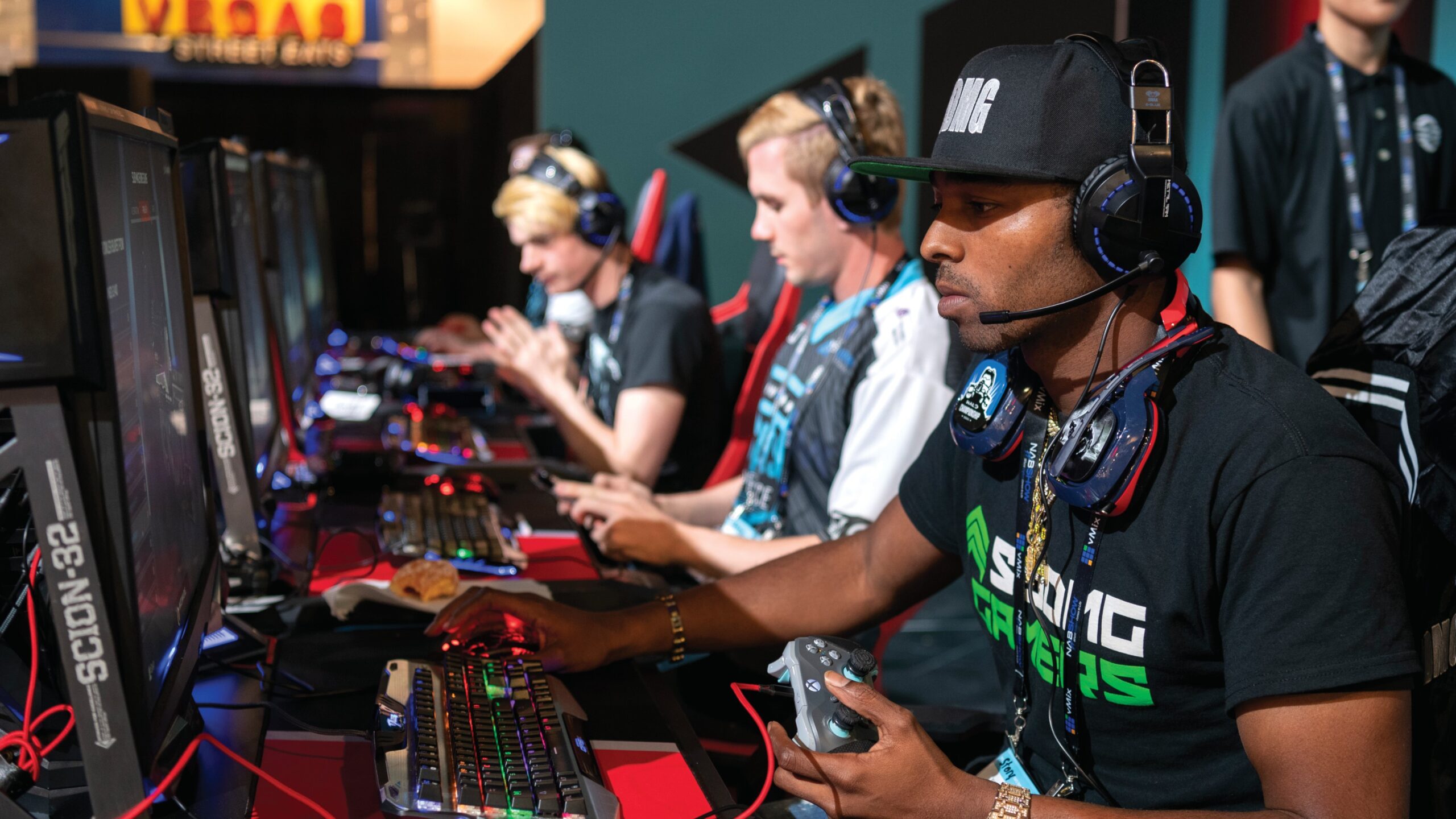Imagine sitting on the edge of your seat, watching your favorite gamer outmaneuver opponents in a high-stakes League of Legends tournament, the crowd roaring through your headphones as the live chat explodes with reactions. This is the electrifying world of eSports streaming, a phenomenon that’s transforming how we experience gaming. From basement setups to global stages, eSports has evolved from niche hobby to mainstream entertainment, driven by cutting-edge technology and passionate communities. In this article, we’ll dive deep into the future of eSports streaming, exploring its technological advancements, monetization opportunities, and what it means for gamers, brands, and fans alike.
What Is eSports Streaming?
eSports streaming is the live or on-demand broadcasting of competitive video gaming, where professional players or teams compete in titles like Dota 2, Fortnite, or Valorant. Platforms like Twitch, YouTube Gaming, and Muvi Live enable gamers to share their gameplay with millions, complete with real-time commentary and audience interaction. It’s not just about watching; it’s about engaging with a global community in a shared, adrenaline-pumping experience.
Why eSports Streaming Is Booming
The eSports industry is projected to hit $9.29 billion by 2032, growing at a 20.7% CAGR from 2024. Why? Accessibility, interactivity, and technological advancements have turned gaming into a spectator sport. Fans don’t just watch—they chat, donate, and influence the experience, creating a dynamic unlike traditional TV.
The Technological Pillars Shaping eSports Streaming
Technology is the backbone of eSports streaming, enabling seamless, immersive experiences. From 5G to AI, let’s explore the innovations driving this industry forward.
5G and Low-Latency Streaming
5G technology is a game-changer, slashing latency to deliver near-instantaneous gameplay streams. This means smoother, lag-free viewing, even for massive global audiences watching 4K streams. For example, during a 2023 Counter-Strike tournament, 5G-powered streams on Twitch delivered crystal-clear visuals with minimal buffering, keeping fans glued to the action.
AI and Machine Learning Enhancements
AI is revolutionizing eSports streaming by personalizing viewer experiences. Platforms like Muvi Live use AI for content recommendations, tailoring streams to your gaming preferences. Automated production workflows also reduce costs, letting streamers focus on gameplay rather than tech headaches. Imagine AI suggesting a Fortnite stream based on your love for battle royales—pretty cool, right?
VR/AR for Immersive Experiences
Virtual and augmented reality (VR/AR) are pushing boundaries, offering fully immersive gaming environments. Picture watching a League of Legends match from the perspective of a player’s POV through a VR headset. While still in its infancy, VR/AR promises to make eSports streaming feel like you’re in the game.
High-Definition 4K Streaming
With 4K video becoming standard, eSports streams are sharper than ever. Platforms like Muvi Live and YouTube Gaming support high-definition streams, ensuring every pixel of a Dota 2 dragon fight pops on your screen. This clarity enhances viewer engagement, especially for fast-paced games where details matter.
The Foundational Pillars of eSports Streaming
Beyond tech, eSports streaming thrives on four key pillars: content, community, accessibility, and monetization. Let’s break them down.
Video Game Content: The Core of eSports
At its heart, eSports is about compelling video game content. Popular genres like MOBA (League of Legends, Dota 2) and first-person shooters (Valorant, Call of Duty) dominate streams due to their competitive nature. Content creators, like streamer Ninja, craft binge-worthy gameplay that keeps viewers hooked.
Community Engagement: The Soul of Streaming
eSports thrives on its passionate communities. Live chats, polls, and emotes (like Twitch’s Hype Train) create a sense of belonging. I once joined a Twitch chat during a Fortnite tournament, and the energy was electric—fans cheering, memeing, and even roasting the streamer’s missed shots. It felt like being at a live sports event, but better.
Accessibility Across Devices
Streaming platforms like Muvi One and Twitch make eSports accessible on any device—smartphones, PCs, even consoles like Xbox and PS5. This flexibility lets fans watch anywhere, anytime, whether they’re on a lunch break or chilling at home. Accessibility is why eSports viewership hit 532 million globally in 2022.
Monetization Opportunities
Streamers and platforms cash in through subscriptions, ads, donations, and pay-per-view models. For instance, Muvi One supports multiple monetization options, letting streamers charge for exclusive content. Pro gamers like Faker earn millions through tournament winnings and stream revenue, proving eSports is a viable career.
Top Platforms for eSports Streaming
Choosing the right platform is crucial for streamers and viewers. Here’s a comparison of the leading options.
| Platform | Key Features | Best For | Monetization Options |
|---|---|---|---|
| Twitch | Robust community, live chat, emotes | Community-driven streaming | Subscriptions, ads, donations |
| YouTube Gaming | High-quality video, archives, discoverability | Evergreen content, casual viewers | Ads, memberships, super chats |
| Muvi Live | Low latency, multi-device, monetization | Professional streamers, brands | Subscriptions, PPV, ads |
| Kick | Streamer-friendly revenue splits | New streamers, mobile audiences | Subscriptions, donations |
| Facebook Gaming | Strong regional reach, social integration | Casual gamers, social media users | Ads, fan subscriptions |
Twitch: The King of Community
Twitch dominates with its interactive features like channel points and Hype Trains. It’s perfect for streamers who thrive on live engagement, though its crowded market can make discoverability tough.
YouTube Gaming: The Archive Powerhouse
YouTube excels at high-quality streams and video archives, ideal for fans who miss live events. Its downside? Limited tournament coverage compared to Twitch. Still, Fortnite streams on YouTube have racked up 67 billion views.
Muvi Live: The All-in-One Solution
Muvi Live stands out for its no-code platform, supporting low-latency streaming and monetization across 16+ devices. It’s a favorite for brands launching their own eSports channels, offering geo-blocking and DRM protection for secure streams.
Kick and Emerging Platforms
Newer platforms like Kick and Trovo are gaining traction with generous revenue splits. Kick, launched in 2023, is a haven for mobile-first streamers, while Trovo appeals to up-and-coming creators. They’re shaking up the market, but their smaller user bases limit reach.
Pros and Cons of eSports Streaming
Pros
- Global Reach: Stream to millions across devices and regions.
- Interactive: Real-time chats and polls create engaging experiences.
- Monetization: Multiple revenue streams, from ads to subscriptions.
- Accessibility: Watch or stream from anywhere with an internet connection.
- Scalability: Platforms like Muvi Live scale effortlessly for large audiences.
Cons
- High Competition: Standing out on Twitch or YouTube is tough for new streamers.
- Tech Barriers: VR/AR and 4K streaming require powerful hardware.
- Bandwidth Costs: High-quality streams demand robust internet connections.
- Content Moderation: Managing toxic chat behavior can be challenging.
The Future of eSports Streaming: What’s Next?
The future of eSports streaming is bright, with innovations poised to redefine the industry. Here’s what to expect.
Increased Interactivity
Platforms are doubling down on interactive features. Imagine voting on a streamer’s next move in a Valorant match or joining a virtual watch party via VR. Muvi Live’s live polls and chats are already paving the way for deeper fan engagement.
Global Expansion
eSports is going mainstream, with traditional sports organizations like the Premier League launching their own leagues. The International Olympic Committee is even considering eSports for the Olympics, signaling its growing legitimacy.
Diverse Content
Beyond tournaments, expect more documentaries, behind-the-scenes content, and gamer lifestyle streams. Platforms like Muvi One support diverse content types, letting streamers mix live gameplay with on-demand highlights.
Sustainability and Ethics
As streaming grows, so do concerns about data privacy and environmental impact. Platforms will need to address carbon footprints from high-bandwidth streams and ensure ethical ad targeting to maintain trust.
How to Start Your Own eSports Streaming Channel
Ready to jump into eSports streaming? Here’s a step-by-step guide to launch your channel using a platform like Muvi Live.
- Choose a Platform: Pick Muvi Live for its no-code setup or Twitch for its community focus.
- Set Up Equipment: Invest in a good PC, microphone, and webcam. A streaming encoder like OBS is essential.
- Create Content: Stream popular games like League of Legends or niche titles to attract specific audiences.
- Monetize: Use subscriptions, ads, or pay-per-view. Muvi Live supports multiple models to maximize revenue.
- Engage Your Audience: Use live chats and polls to build a loyal fanbase. Respond to comments to keep viewers hooked.
- Analyze Performance: Track engagement with tools like Muvi One’s analytics to optimize your content.
For a seamless start, try Muvi Live’s 14-day free trial—no credit card required.
People Also Ask (PAA)
What is the best platform for eSports streaming?
Twitch leads for community engagement, while Muvi Live is ideal for professional setups with monetization options. YouTube Gaming excels for archived content. Choose based on your goals—community, revenue, or reach.
How can I start streaming eSports?
Sign up for a platform like Muvi Live or Twitch, set up OBS, and start streaming gameplay. Engage viewers with live commentary and use analytics to grow your audience. A good internet connection is key
Why is eSports streaming so popular?
eSports streaming combines competitive gaming with real-time interaction, accessible on any device. Its global reach, immersive tech, and monetization potential make it a hit with fans and creators.
Can you make money streaming eSports?
Yes! Streamers earn through subscriptions, ads, donations, and sponsorships. Platforms like Muvi Live offer multiple monetization models, while top streamers like Ninja make millions annually.
FAQ
How much can I earn from eSports streaming?
Earnings vary widely. New streamers might make $100-$1,000 monthly through donations and subscriptions, while top streamers like Faker earn millions via sponsorships and tournament winnings. Platforms like Muvi Live maximize revenue with flexible monetization.
What equipment do I need to stream eSports?
You’ll need a powerful PC, a quality microphone, a webcam, and streaming software like OBS. A fast internet connection (at least 10 Mbps upload) is crucial for lag-free streams.
Is eSports streaming only for professionals?
No! Amateurs and pros alike can stream. Platforms like Twitch and Muvi Live cater to all skill levels, letting anyone share their gameplay and build a community.
How do I grow my eSports streaming audience?
Engage viewers with live chats, stream consistently, and play trending games like Valorant. Use analytics to understand viewer preferences and promote your channel on social media.
Are there free eSports streaming platforms?
Yes, Twitch and YouTube Gaming offer free streaming, though paid plans unlock more features. Muvi Live’s free trial is a great way to test premium features without upfront costs.
Conclusion
eSports streaming is more than a trend—it’s the future of entertainment, blending cutting-edge tech with passionate communities. From 5G-powered 4K streams to VR immersion, the industry is evolving fast, offering endless opportunities for streamers and fans. Whether you’re a gamer dreaming of streaming fame or a fan eager to join the action, platforms like Muvi Live and Twitch make it easier than ever to dive in. So, grab your controller, fire up your stream, and become part of the eSports revolution—because the game is just getting started.



